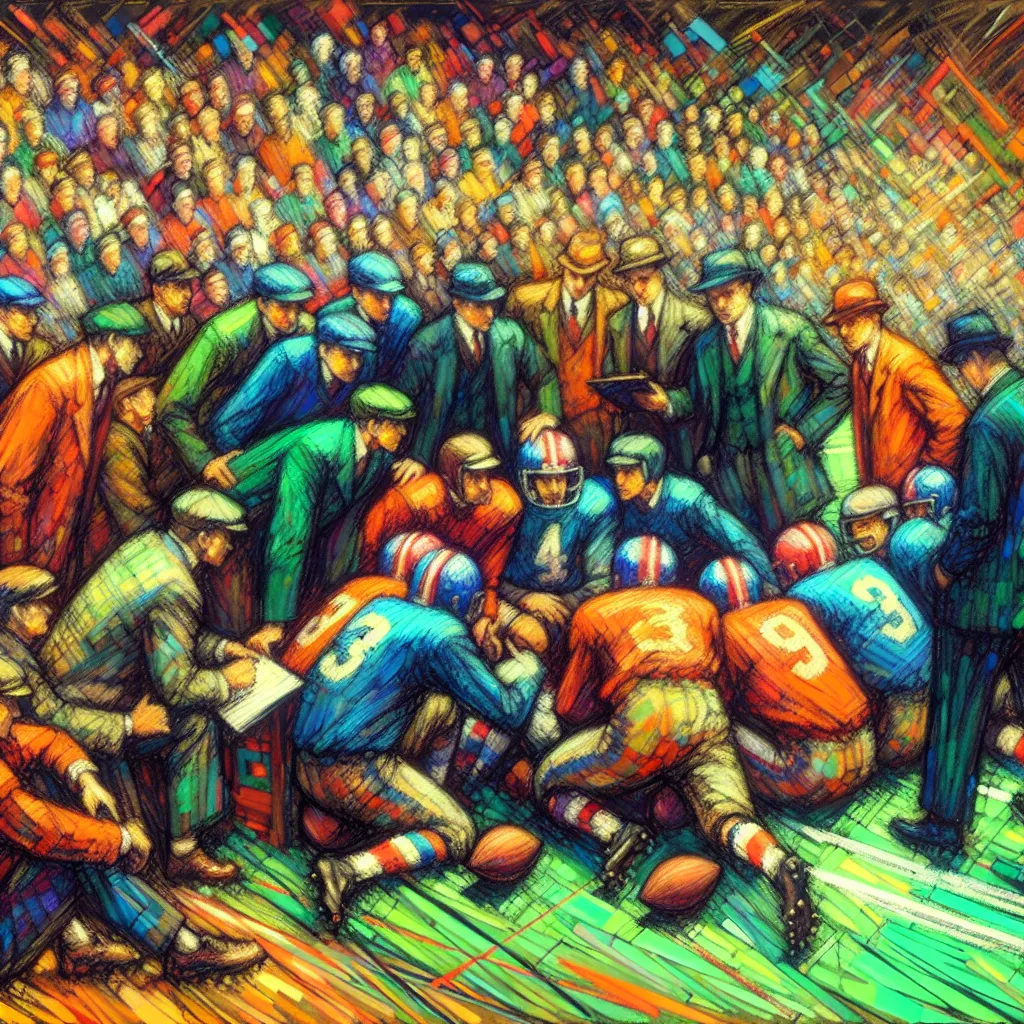
- Published on
- Authors

- Name
- Sports Tips
Reading Defenses: Recognizing Coverages and Adjusting Routes
When it comes to playing the wide receiver (WR) position in football, one of the critical skills for becoming an elite playmaker is the ability to read defensive coverages and adjust routes accordingly. Understanding how to exploit defensive schemes can turn any talented receiver into a nightmare for defensive coordinators across the league.
The Basics of Defensive Coverages
Before diving into the nuances of route adjustments, it's crucial to grasp the fundamental defensive coverages. Here are the most common types:
| Coverage Type | Description | Key Features |
|---|---|---|
| Cover 1 (Man Free) | Single high safety, man-to-man coverage underneath | One deep safety, man coverage on WRs, often aggressive with press coverage |
| Cover 2 | Two deep safeties, zone coverage underneath | Two safeties splitting the deep field, CBs handle flats, LBs drop into mid zones |
| Cover 3 | Three deep defenders (typically CBs and FS), zone coverage | Each deep defender covers a third of the field, CBs often bail out to deep third |
| Cover 4 (Quarters) | Four deep defenders (usually safeties and CBs), zone (quarters) | Each deep defender covers a quarter of the field, focus on preventing deep passes |
| Cover 6 | Combo coverage (half Cover 4, half Cover 2) | One side plays Cover 4, the other Cover 2, used to counter offenses targeting one side |
| Cover Zero (Blitz) | No deep safety, aggressive man-to-man coverage | All DBs in man coverage, often accompanied by heavy blitz pressure |
Recognizing Coverages Pre-Snap
The ability to identify coverage begins even before the snap. Here are a few tips to help you recognize coverages pre-snap:
- Safety Alignment: The number and alignment of safeties can reveal whether it's likely a single-high (Cover 1 or Cover 3) or two-high look (Cover 2 or Cover 4).
- Cornerback Depth and Technique: CBs playing off and aligned outside may indicate zone coverage, whereas press or tight alignment often suggests man coverage.
- Linebacker Depth: LBs close to the line and looking aggressive might signal a heavy blitz, possibly a Cover Zero.
- Motion Response: Sending a player in motion can help reveal man vs. zone. If a defender follows the motion, it could mean man coverage.
Adjusting Routes Post-Snap
Once the ball is snapped, the dance between the wide receiver and the defense begins. Based on the coverage recognized, here are some adjustments WRs can make:
Beating Man Coverage
- Slants and Drags: Quick routes can outpace a pressing CB.
- Double Moves: A stutter step followed by a sharp cut can lose a defender.
- Comebacks and Curls: Utilizing change of direction can create separation from trailing defenders.
Exploiting Zone Coverage
- Finding Soft Spots: Settle into open spaces between zones (e.g., sit routes or hooks in Cover 3).
- Seam Routes: Against Cover 2, attacking the seam between safeties and LBs can be effective.
- Flood Concepts: Overloading a zone by sending multiple WRs into a defender's area forces defensive mistakes.
Adjusting in Real-Time
Wide receivers need to be in tune with their quarterbacks and anticipate coverage changes during the play. Communication and chemistry are key:
- Hand Signals and Pre-Snap Reads: Confirm coverage understanding with your QB.
- Hot Routes: Change routes on the fly based on immediate defensive adjustments, particularly against blitzes.
- Spacing and Timing: Execute route adjustments with proper depth and timing to ensure you're in sync with the QB's throw window.
Practice and Film Study
To master reading defenses and adjusting routes, practice and film study are paramount. Here's how:
- Film Review: Analyze game film to learn how different defenses react in various situations. Note tendencies and coverage shells.
- Route Drills: Work on specific routes against different coverages in practice. Simulate game conditions with a scout team defense.
- Communication Drills: Develop non-verbal cues and hand signals with your QB to ensure seamless in-game adjustments.
Conclusion
Reading defensive coverages and adjusting routes is an art form that separates good wide receivers from the great ones. By honing your ability to decipher defensive schemes and modify routes on the fly, you'll find yourself consistently in open spaces, making clutch catches, and turning the tide of games. So hit the film room, practice field, and get ready to dominate the gridiron!
For more breakdowns, drills, and tips on enhancing your football skills, stay tuned and keep grinding.
